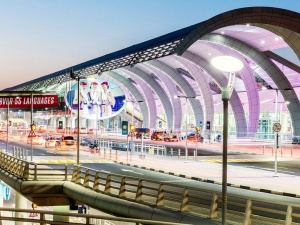Gulf airports get busy with expansion plans, Saudi goes a step further with 20 new ones
 For Dubai, creating additional capacity within its aviation space is part of the normal.
For Dubai, creating additional capacity within its aviation space is part of the normal. When it comes to new airports – or even expansion at existing ones – the Gulf is no mood to slow down. Saudi Arabia is en route to adding more, keeping in mind the unprecedented push the Kingdom is giving to travel and tourism. And keeping in mind the new airline that should soon hit the skies.
But airport build up will not be confined to Saudi Arabia alone, and what’s being planned or already worked on should keep aviation authorities in the UAE and Qatar quite busy. According to Abdo Kardous, President for Middle East operations at the project management consultancy Hill International, busy enough for the next 10 years, at the least.

“The biggest development is planned in Saudi Arabia with more than 20 new airports, many of them greenfield,” said Kardous. “Since the majority of Middle East nations kept airports open during Covid, offering as many flights as possible, the Gulf became a hub between the East and the West, taking advantage of the connectivity the region provides to multiple destinations. “Also, the visa-free entry requirements in the GCC has helped to strengthen the region’s position as a hub for travel and as a destination for short vacations. Compared with the bottlenecks Europe’s major airports experienced this summer, it was relatively smooth in the GCC.
“This will have a positive long-term impact to the GCC as travelers experienced first-hand the relative ease of transiting or transferring through the region, avoiding flight cancellations, airport capacity restrictions, travel disruptions and delays.”
More concourses, more terminals
Here’s a project list of what’s happening within the airport in the region:
Abu Dhabi is operating with Terminal 3, but when the 750,000 square meter Midfield Terminal is operational, capacity will be greatly enhanced, the Hill International official said.
Dubai is operating between Terminals, 1, 2 and 3 with two runways, while some flights are operating out of the Maktoum International Airport, which currently plans to have six runways.
For the FIFA World Cup, Qatar has completed one of its planned expansions to Doha International Airport. Plans for Concourses D and E are under way.
In Egypt, plans to build Terminal 4 at Cairo International Airport is advancing, There will also be construction of new regional airports that will connect travelers directly with tourist destinations along the Nile River.
Plus, there is the Saudi rollout, focusing on connectivity to the new cities and tourist destinations taking shape.
Each of which would make perfect commercial sense. “Several airports are operating close to pre-Covid levels,” said Kardous. “Many regional travelers are opting as well to fly rather than use various land modes of transport, primarily due to cost considerations.
ADVERTISEMENT
For Dubai, creating additional capacity within its aviation space is part of the normal.
“Automation will only increase at airports, to streamlining the flow of passengers and goods through airports. Technology will also lead to more sustainable facilities, as smart airports will reduce use of natural resources.”

